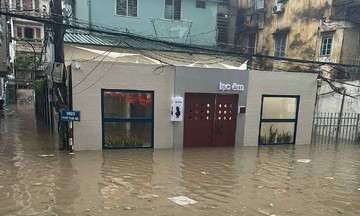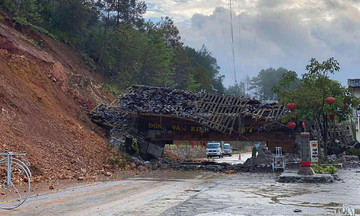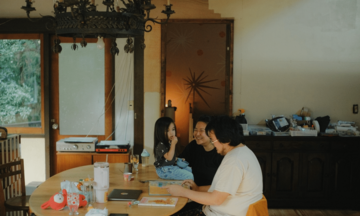The Dak Son lithophone was discovered in 2014 when residents were digging holes to plant pepper trees in Dak Son village, Dak Sak commune, Lam Dong province (formerly Nam Xuan commune, Krong No district, Dak Nong province).
The instrument consists of 16 rhyolite slabs, dating back 3,500 to 3,000 years. Eleven slabs are intact, and five are broken but can be restored. The slabs have an average length of 57.6 cm, a width of 12.4 cm, a thickness of 3 cm, and weigh about 3.94 kg, producing sounds with frequencies from 191.9 Hz to 4,500 Hz.
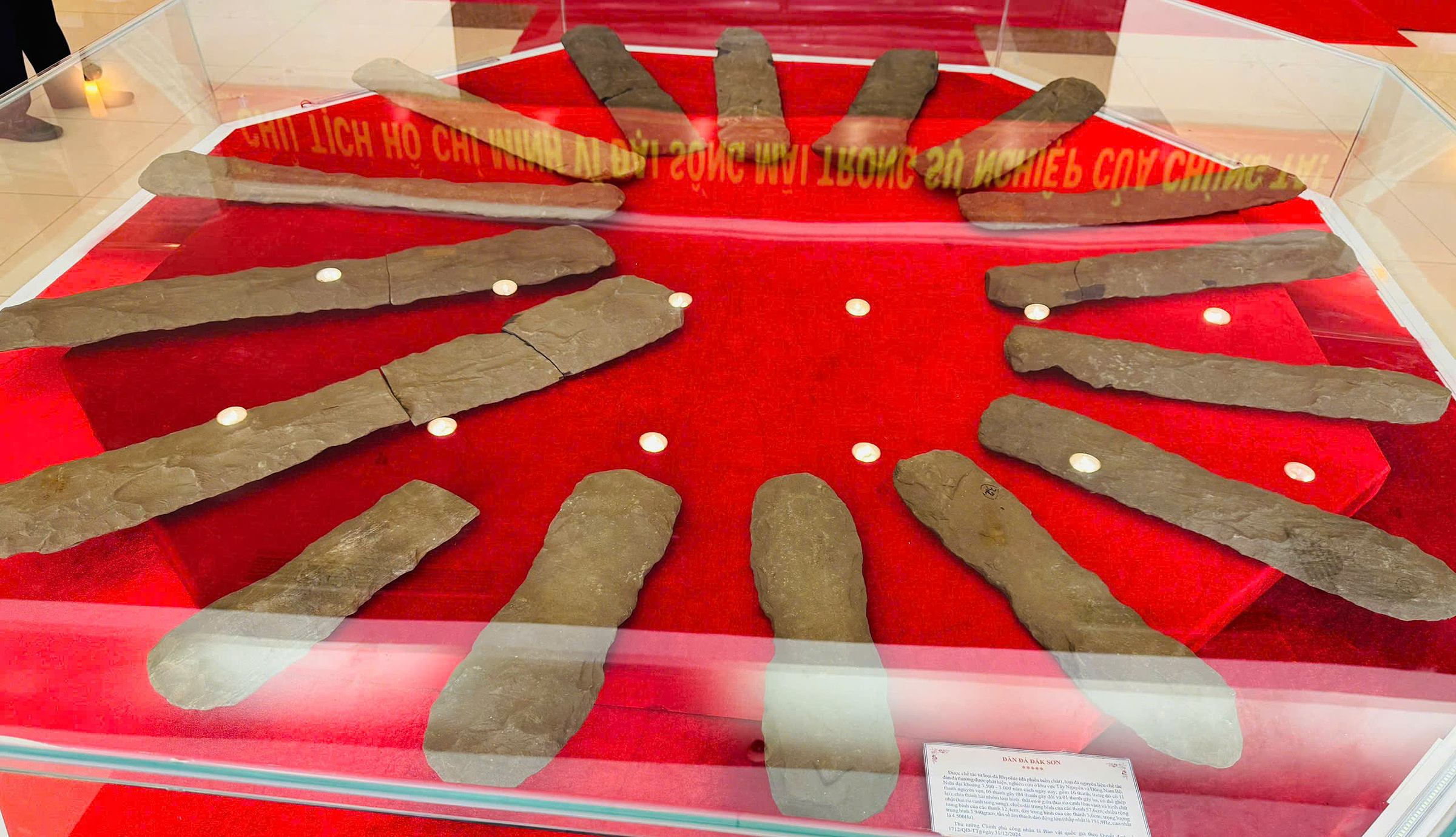 |
The Dak Son lithophone displayed at the Dak Nong Museum. Photo: Lam Vien |
The Dak Son lithophone displayed at the Dak Nong Museum. Photo: Lam Vien
The Lam Dong Department of Culture, Sports, and Tourism stated that the recognition of the Dak Son lithophone as a national treasure affirms its special archaeological, geological, and cultural value and creates opportunities for sustainable tourism development linked to heritage preservation.
Associate Professor, Dr. Bui Van Liem, General Secretary of the Vietnam Archaeological Association, described the Dak Son lithophone as a rare treasure, exquisitely crafted from material selection to carving techniques, demonstrating the high skill of prehistoric artisans. It is a "stone slab" instrument, arranged according to a fixed musical scale, reflecting the cultural and artistic life of the late Neolithic to early Metal Age in the Central Highlands and Vietnam. The lithophone is currently kept at the Dak Nong Provincial Museum.
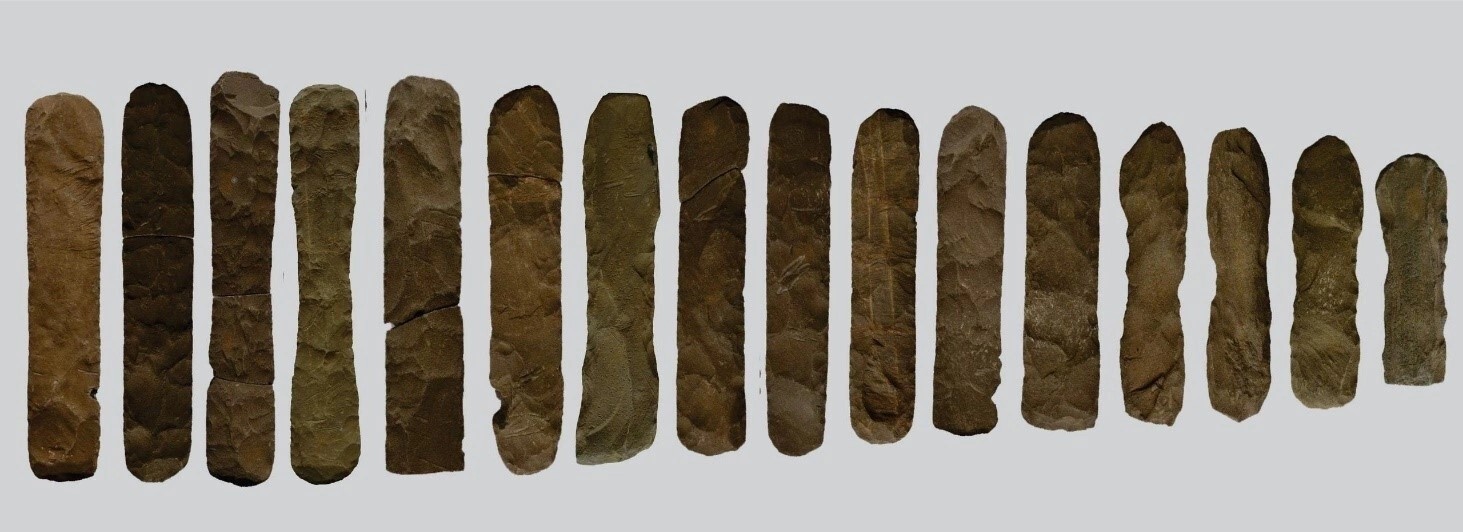 |
The 16 rhyolite slab lithophone was created about 3,500 - 3,000 years ago. Photo: Cultural Heritage Department |
The 16 rhyolite slab lithophone was created about 3,500 - 3,000 years ago. Photo: Cultural Heritage Department
Vietnam now has four lithophone collections recognized as national treasures: Loc Hoa (Binh Phuoc), Binh Da (Dong Nai), Khanh Son (Khanh Hoa), and Dak Son (Lam Dong), contributing to the formation of a lithophone cultural space in central Vietnam, the Central Highlands, and southern Vietnam.
Lam Dong also announced the recognition of the C3-C4 cave system in the Krong No volcanic cave system as a national scenic relic. This is part of Southeast Asia's longest volcanic cave system, formed by the eruption of the Chu B'luk volcano about 600,000 to 200,000 years ago.
In addition, the Tam Blang M'prang Bon festival (the fence-building and tree-planting ceremony) of the M'nong people has been included in the list of National Intangible Cultural Heritages.
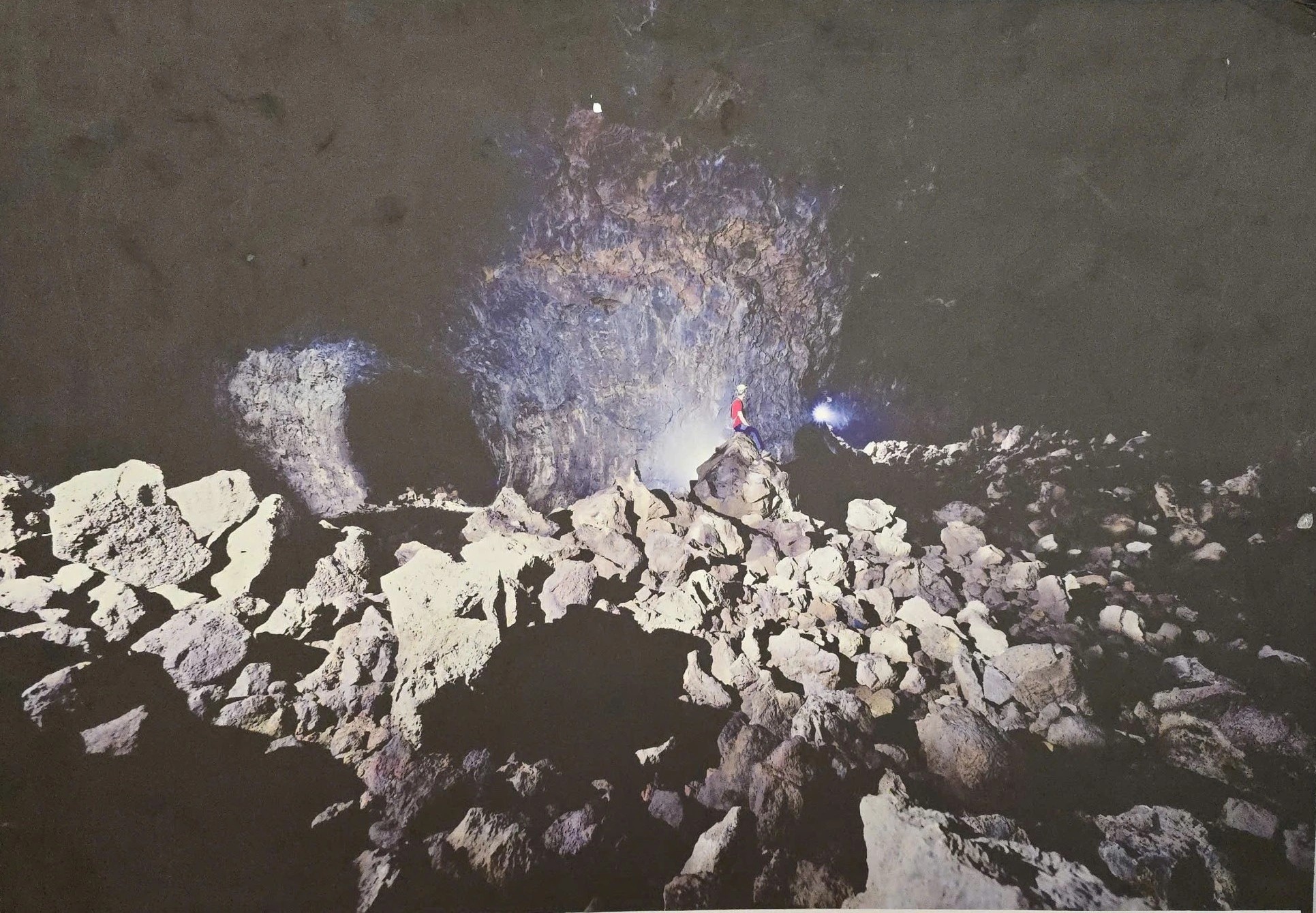 |
The mouth of the C3 volcanic cave in the Krong No volcanic cave system. |
Tuan Anh







